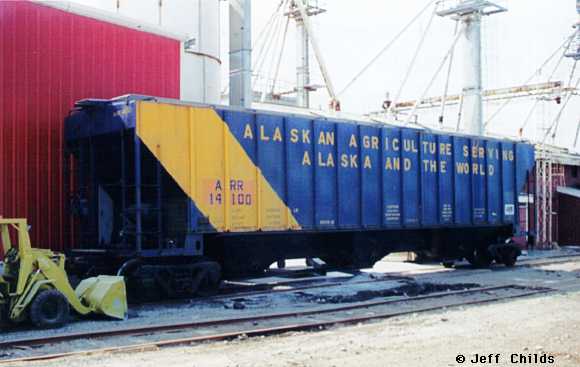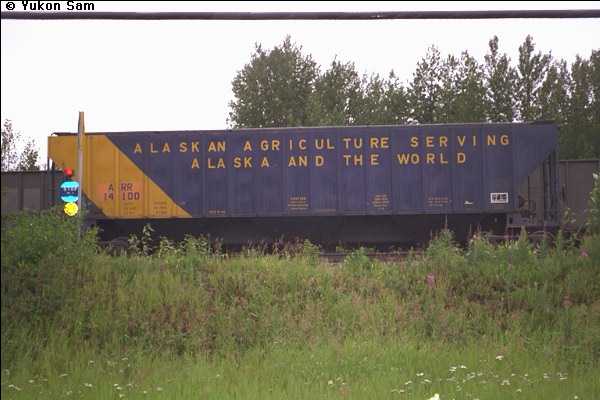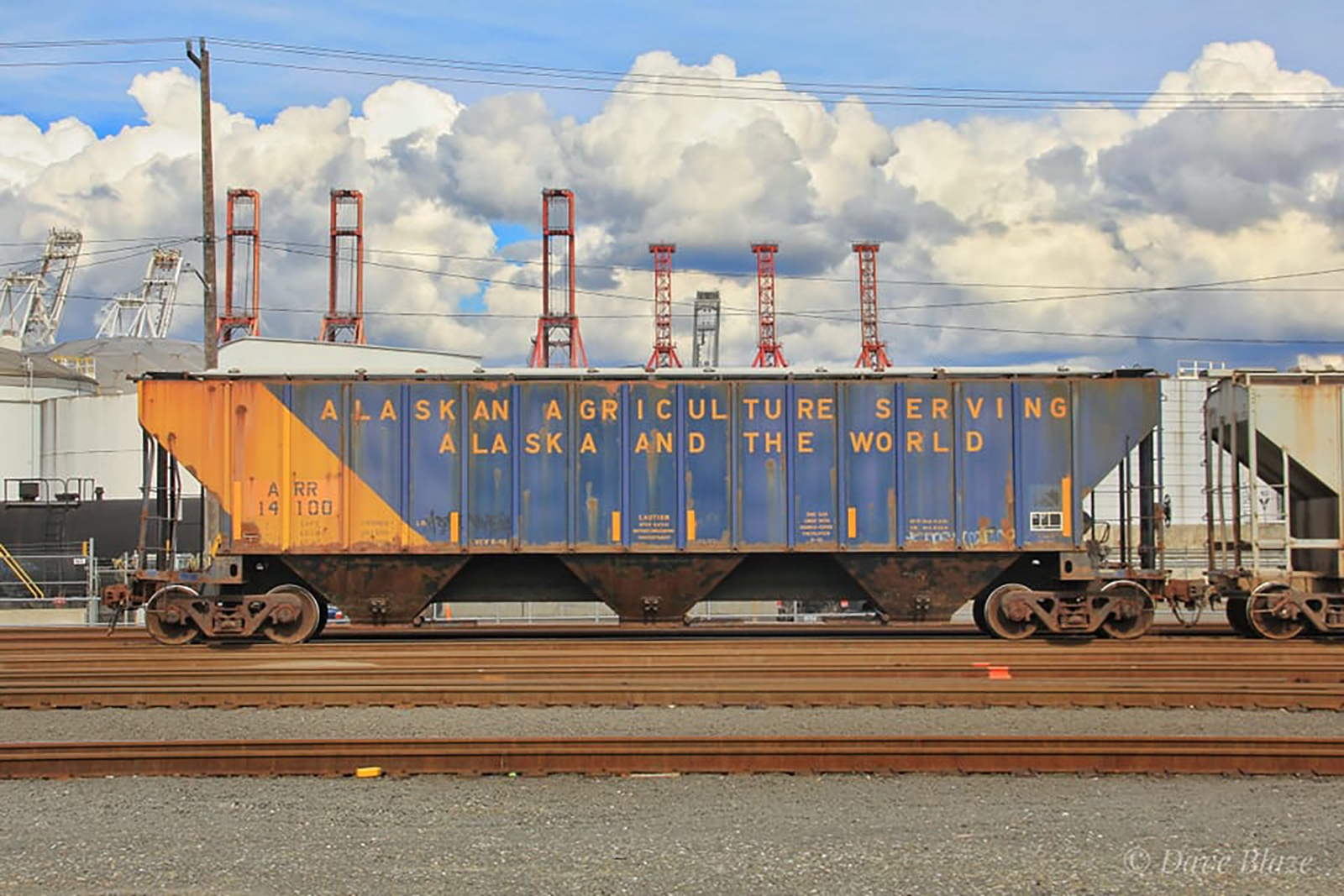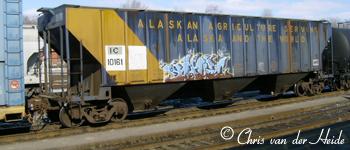 |
||||
Numbers: 14100, 14101
From Chris van der Heide (12/10/09):
I was looking at the page on hoppers on your site, and some of the information
stated on this page is inaccurate. The quote from Raini Rischi identifies
the 14850 series of cylindrical cement hoppers as ex-BNSF but they
are decidedly not ex-BN/BNSF, they're ex-British Columbia Railway.
(You have a photo of one of these on the main hoppers page correctly
marked as ex-BC Rail)
From ARR employee Raini Risch (10/8/04): "The 14850 series covered hoppers were bought from BNSF (if I'm not mistaken) as they match others we have up here in paint schemes but have been renumbered 14850 - 14859. As I mentioned before, they don't run as a unit but are piece-mealed up here on our barges from Seattle. Numbers 14100 and 14101 are specifically used for feed (barley, corn, etc.) loading for AK Mill and Feed products." From Scott Harris (10/13/04): "I've learned that the fleet was sold to private leasors and now wears WLO reporting marks as a subsidiary of CN/IC. I'm unsure why exactly the ARR took ownership of just the 14100 and 14101, but it remains the case."
 |
 |
The Other Half Of The "Fleet"! For Freight Car Friday here's a photo of the other member of the Alaska Railroad's two car fleet of grain hoppers! Some time ago I shared a picture of sister car 140101 in Anchorage and here is 140100 in UP's Harbor Island Yard awaiting a thousand mile sail on the AML barge back home to Whittier and the ARR system. As I wrote in that post, did you know the Alaska Railroad has its own grain train? Well sort of….but it’s not exactly like a 16,000 ton BNSF “earthworm.” The ARRC owns a grand total of TWO agriculture service covered hoppers that travel by barge two and from the Lower 48 in exclusive service to Alaska Mill and Feed located on the APU spur in Anchorage. ARR 14100 and 14101 are decorated and the state colors of blue and gold and emblazoned with the bold slogan ‘Alaskan Agriculture Serving Alaska And The World.” These two were part of a fleet of twenty 100 ton cars built new by Thrall in 1983 and originally numbered AACX 001-020. Those reporting marks belonged to the Alaska Agricultural Action Council (AAAC), a strange footnote in Alaska history when the state, awash in North Slope oil money in the late 1970s and 1980s, was spending like the proverbial drunken sailor and invested millions to develop a large scale agriculture industry in the 49th state. While the idea of diversifying the state economy away from the three pillars of oil, mining, and tourism was certainly worthwhile, anyone who believed the economics of mass farming would work in the Alaskan climate so far from major markets was probably a bit delusional. Nonetheless the state pursued the Delta Barley Project and the Point MacKenzie Dairy Project to show the feasibility of the industry. A grain terminal was planned for Seward and these twenty cars were purchased even though the export terminal there was never built. Interestingly Valdez, despite not being on the rail system, wanted to compete for the export business and did built a concrete silo on its harbor that was never used, but stands to this day as a strange monument to this idea. I won’t go into much more detail about the project and its history but as always there is a lot more to learn out there if your curiosity has been piqued so here are two links for further reading: Don't tell Delta farmers that 1980s project was a bust As for the fleet of cars they were sold off and most ended up belonging to the Illinois Central where they ran around in this same paint scheme but with IC family reporting marks never to return to Last Frontier. However, these two were purchased and renumbered and provide a tangible reminder to that strange dream of Delta Barley serving the world…at least for those who know the what they’re looking at….like all of you who read this now do! Seattle, Washington |











